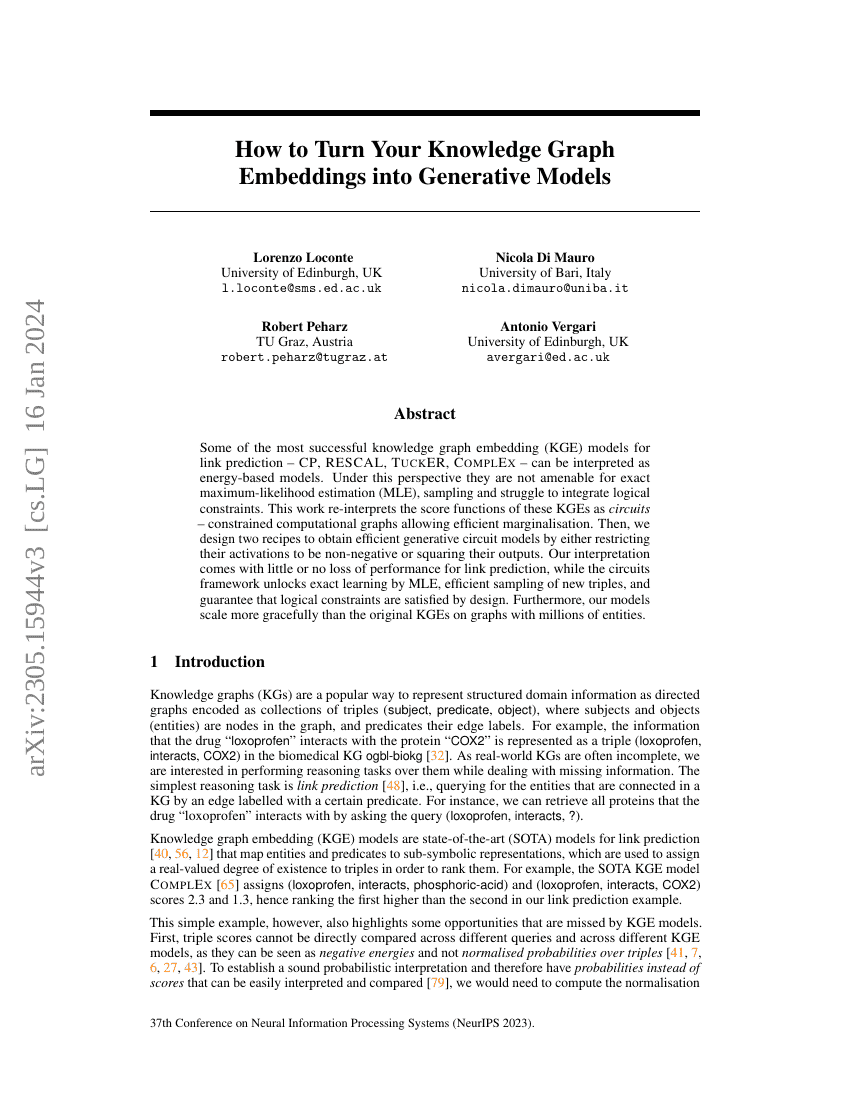Command Palette
Search for a command to run...
Lorenzo Loconte Nicola Di Mauro Robert Peharz Antonio Vergari

Abstract
Some of the most successful knowledge graph embedding (KGE) models for link prediction -- CP, RESCAL, TuckER, ComplEx -- can be interpreted as energy-based models. Under this perspective they are not amenable for exact maximum-likelihood estimation (MLE), sampling and struggle to integrate logical constraints. This work re-interprets the score functions of these KGEs as circuits -- constrained computational graphs allowing efficient marginalisation. Then, we design two recipes to obtain efficient generative circuit models by either restricting their activations to be non-negative or squaring their outputs. Our interpretation comes with little or no loss of performance for link prediction, while the circuits framework unlocks exact learning by MLE, efficient sampling of new triples, and guarantee that logical constraints are satisfied by design. Furthermore, our models scale more gracefully than the original KGEs on graphs with millions of entities.
Code Repositories
Benchmarks
| Benchmark | Methodology | Metrics |
|---|---|---|
| link-property-prediction-on-ogbl-biokg | ComplEx^2 | Ext. data: No Number of params: 187648000 Test MRR: 0.8583 ± 0.0005 Validation MRR: 0.8592 ± 0.0004 |
Build AI with AI
From idea to launch — accelerate your AI development with free AI co-coding, out-of-the-box environment and best price of GPUs.